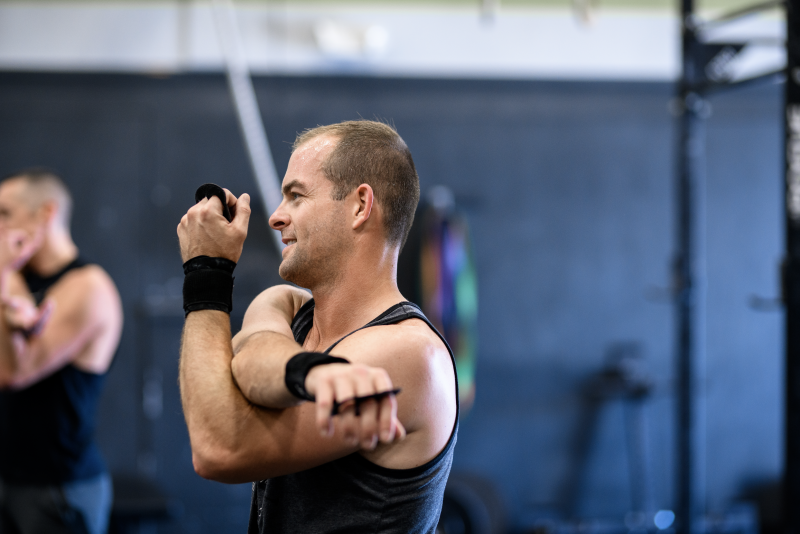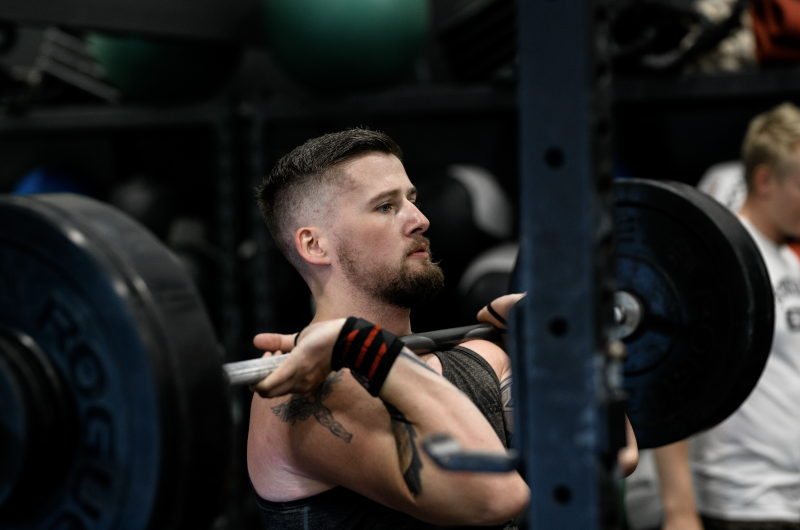
Here's an attempt to consider how your clients are responding to stress and the demands of the programming that you’re delivering and what we need to consider to devise a better plan.
It’s too easy to fall into the trap of thinking that hard work will do the job. I often hear online “coaches” talk about just lifting heavy regularly — that will do the trick. Actually, that won’t do the trick if you plan on your clients having longevity at your facility.
There is much more to the equation than applying some dogmatic views of “lift heavy every day” or “go balls to the wall” or "program for the best, scale for the rest." If you’re a client reading this, and your coach is telling you that, it’s time to get a new coach.
If simply doing more were the solution, we’d all have elite level totals while being able to run a five-minute mile.
The first thing that needs to be considered is the body’s response to stress. This isn’t meant to be an exercise physiology paper, but understanding the General Adaptation Syndrome (GAS), which has been around since 1936 is a good place to start — these phases of adaptation can be maximized, but there’s a fine line between making gains and overtraining (exhaustion phase of GAS).
With that said, it would make sense to think that daily high-intensity work is a clear path to burnout. Many gym owners simply say, “They no longer enjoy it,” but losing motivation can be a sign of overtraining, too. There are ebbs and flows in life; there should be ebbs and flows in your program design.
The solution: The Conjugate Method. If you’ve read any of my articles, you’re probably not surprised to hear this, but I’m going to try to explain how the Conjugate Method provides the perfect framework for an effective group functional fitness program.

The Conjugate Method vs. Box Programming
The Conjugate Method and box programming are similar — both are constantly varied. In my opinion, that’s where the comparison ends. The Conjugate way of training is superior for many reasons, but both can coexist and benefit each other. The biggest difference: structure and prioritizing building a base of fitness via lower-skill measures like sled work and special exercises.
Here are some things that should be considered and how the Conjugate framework solves these issues:
- Schedules: Most of your clients will have different schedules and availability. As such, the programming must follow some structure and assume that your clients will attend your classes multiple times a week. Because we are not using a “linear approach,” people can miss days or go on vacation and not miss the crux of an entire cycle.
- Training Age: This is going to vary across the board, but we need to be able to satisfy a broad range of abilities in one setting. The Conjugate Method prioritizes smaller exercises thereby building people’s limiting factors. In a group setting, we can’t necessarily program for the individual, so there needs to be a variety of exercises used on the regular. Although we are not providing individual programming, people can still make great progress. Using many variations will be easier for your clients to discover their limitations and take ownership of improving these limitations.
RELATED: The Beginner's Guide to the Conjugate Sequence System
- Goals: Most of your clients will be drawn to your program initially to look better, so prioritizing single-joint work will allow for improvements in body-composition and imbalance — we believe in programming for the rest, scaling for the best. The Conjugate Method aligns perfectly with the majority of our clients' goals to improve body composition. This is accomplished with the training of all special strengths and an emphasis on improving work capacity (via improving the aerobic system). When these aspects of the training come together, people really start to see amazing results not to mention they feel great both mentally and physically.
- The Greater Good: We can't base our programming on a group of clients, so greater good for the greatest number must always be considered. Often times those who are voicing their opinions on your programming do not represent the majority of your clients either — this is usually where coaches make the mistake of "scaling up" their plan because a few people want to improve their snatch and clean and jerk. Always remember why people are walking through your door — your programming needs to align with those goals, not the goals of the two people who want to compete in the sport of fitness.
- Consistency: Offering a consistent template (in terms of where specific pieces are placed in a given week) allows clients to narrow down which days of programming most closely satisfy their goals. Overall, a consistent plan allows us to track real progress and eliminate chances of burnout as well because monitoring volume, intensity, and sequencing proper movement patterns is much easier. “Winging it" with your clients' health and fitness is just stupid. Worrying about who’s going to show up only does your most committed and consistent athletes a disservice. At the end of the day, we want to tailor our plan so it benefits the average client that trains at our facility three to four times a week, not the person that comes haphazardly and isn’t committed to their own progress. When coaches tailor the plans to try to make everyone happy an interesting thing happens — more people end up being dissatisfied, and the overall results suffer.
- Inherent Levels of Stress: It's no mystery that we live in a world where people are chronically stressed out, have poor diets, and poor sleep patterns. If you're running your clients into the ground with high-intensity work on the daily, they'll invariably overtrain. If you’re using the Conjugate framework, it’s much harder for overtraining to occur. Why? Because we’ve built in a minimum of 72 hours between our most taxing training sessions. Additionally, having this framework prevents overlap of working the same musculature and planes of motion daily.
- New Clients: Most boxes have new clients all the time, so programming linear-based progressions does not make sense, as this can be confusing to your new clients and create more stress in an already stressful environment. Have you ever told a new client that you’re on Week 5 of your max strength cycle and they must perform 5 x 3 at 85 percent? They probably thought, “I have no idea what this guy is talking about.” Moreover, when we prioritize work that benefits more people, like sled work and dumbbell work, more people can receive the actual benefits and not be limited by their lack of experience.
- Knowing the Why: Expect to have pushback if you decide to follow a plan like this because your clients still think they need to be inches from death post workout to get better. This can easily be countered by simply doing your homework and being able to explain in simple terms the logic and value of every single workout you put on your whiteboard. If your clients knew what they needed, they wouldn’t have a membership at your gym. Don’t forget that.
- Boredom: Random programming does have the value of novelty, but that's where it ends. You can provide people with plenty of variance in their training, but do so in an organized plan that takes into account their goals and immediate and cumulative training effects.
- Single-Element Focus: It’s OK to program strength-only days often. On paper, your clients may think this work is easy, but they’ll see after the session is complete that performing special exercises that attack weaknesses versus movements they’re already good at is pretty damn challenging. My clients are always surprised at how receptive people are to this work. This also allows us to slow things down and not have to try to squeeze too much into a 60-minute class. Not to mention getting a nasty pump is pretty damn cool.

In Summary
My challenge to you would be to develop a template that separates your higher-threshold work, prioritizes more work that the overwhelming majority of your clients can benefit from, and stop worrying about your clients who only train two times a week.
If you’re skeptical, try this: tell your clients you’re starting a new training cycle on Monday. Most equate training cycle with a magical process that's going to take them to the next level, which of course this process will, but it's not going to be an actual training cycle like most of you are thinking. Tell them to expect to see some new things and to be open-minded. Also, tell them that most of the benchmarks they'll see in the beginning will be retested again in 12 weeks, at which point you’re going to prove to them that they are going to see massive improvements, and most importantly, feel and look better.
If you don’t know where to start with your template, take a look at ours. This template will expose people to work they need regardless of what days they show to train at your gym. Here are a few scenarios to prove to you I'm not just bullshitting you.
Scenario #1: Client trains Monday, Thursday, and Friday
- They'll receive Max Effort Lower + Lower/Ab Accessory Work, Dynamic Effort Lower + High-Threshold Conditioning, Max Effort Upper + Upper Accessory Work
Scenario #2: Client trains Tuesday, Wednesday, and Saturday
- They'll receive Dynamic Effort Upper or Rep Upper/Mixed Modality Conditioning, GPP/Aerobic Work, High-Intensity Continuous Intervals
Scenario #3: Client trains Monday, Tuesday, Thursday, and Friday
- They'll receive Max Effort Lower + Lower/Ab Accessory Work, Dynamic Effort Upper or Rep Upper/Mixed Modality Conditioning, Dynamic Effort Lower + High-Threshold Conditioning, Max Effort Upper + Upper Accessory Work
As you can see, the delivery of work is quite balanced and meaningful. I could continue going down the list of variations of client schedules, but rest assured your clients, regardless of their training schedule, are going to receive work they need and will make progress doing. The bigger challenge is getting your clients to eat and sleep better!
Monday
- Max Effort Lower Body Movement
- High-Resistance Aerobic Work — Sled Work/Loaded Carry
- Band Soft Tissue Work
Tuesday
- Dynamic Effort Upper OR Repetition Upper Body Work
- Upper Assistance Work organized in a mixed modality EMOM
- Recovery Measure
Wednesday
- Low Skill GPP Work or Special Exercise Work
- OR Skill Development Work
- Cardiac Output
Thursday
- Dynamic Effort Lower Body
- Lactic Power Intervals
- Accessory Work
Friday
- Max Effort Upper Body
- No Metcon — Strength and accessory work only
- Band Soft Tissue Work
Saturday
- Partner or Team Conditioning — high-intensity continuous training. 10 minutes of Zone 1 recovery work is built into the end of these sessions.
Images courtesy of RX Photography










